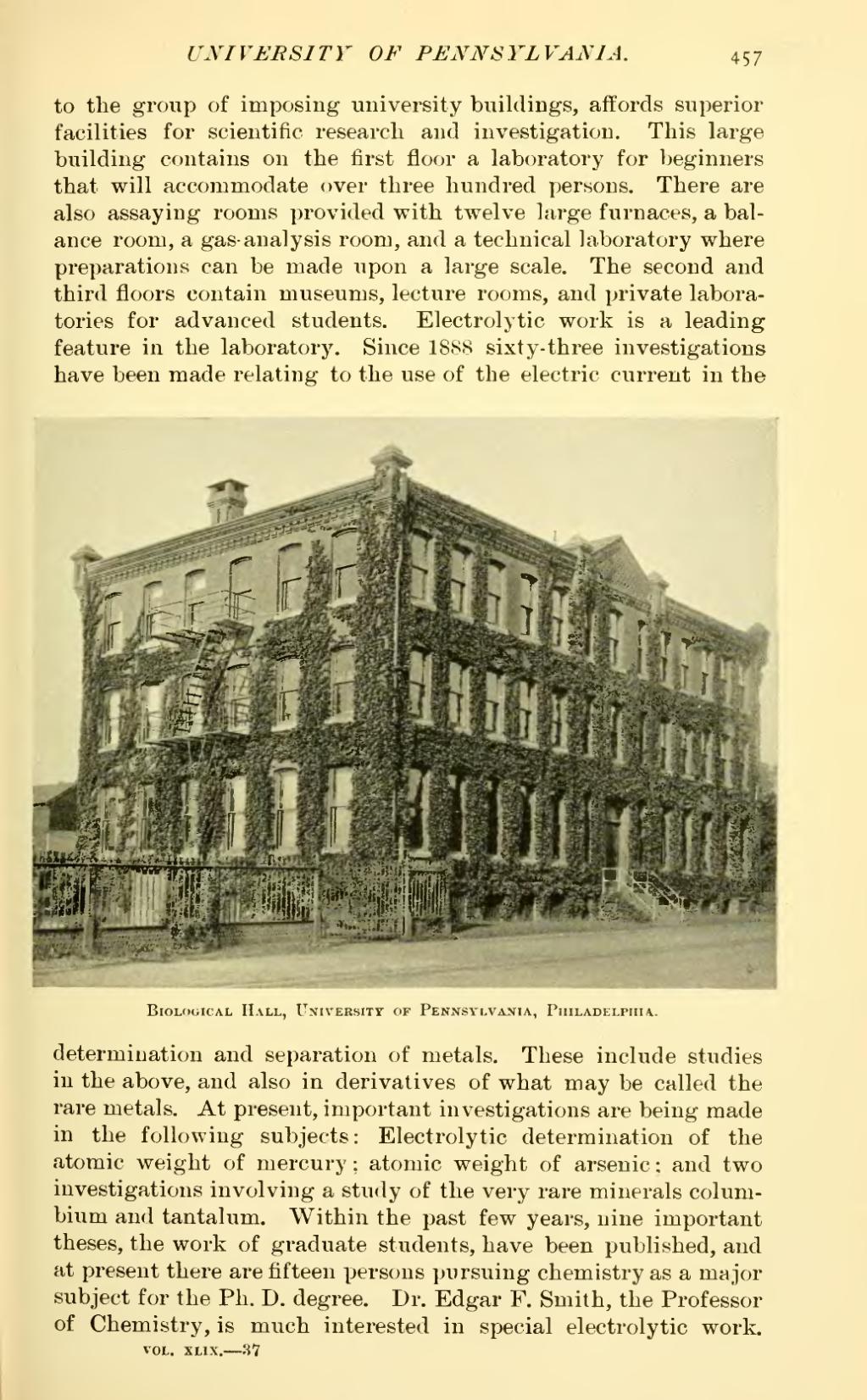to the group of imposing university buildings, affords superior facilities for scientific research and investigation. This large building contains on the first floor a laboratory for beginners that will accommodate over three hundred persons. There are also assaying rooms provided with twelve large furnaces, a balance room, a gas-analysis room, and a technical laboratory where preparations can be made upon a large scale. The second and third floors contain museums, lecture rooms, and private laboratories for advanced students. Electrolytic work is a leading feature in the laboratory. Since 1888 sixty-three investigations have been made relating to the use of the electric current in the

Biological Hall, University of Pennsylvania, Philadelphia.
determination and separation of metals. These include studies in the above, and also in derivatives of what may be called the rare metals. At present, important investigations are being made in the following subjects: Electrolytic determination of the atomic weight of mercury: atomic weight of arsenic; and two investigations involving a study of the very rare minerals columbium and tantalum. Within the past few years, nine important theses, the work of graduate students, have been published, and at present there are fifteen persons pursuing chemistry as a major subject for the Ph. D. degree. Dr. Edgar F. Smith, the Professor of Chemistry, is much interested in special electrolytic work.
